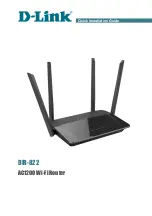
59
Channel
There are multiple channels (frequency carriers) which can be used for wireless
communication. The channel availability may be limited according to regulations in your
country. You can set this field to “
Auto
” which forces the access point to choose the first
available channel for communication, or choose a channel manually to prevent any
interference with other wireless networks in range.
54g
TM
mode
The 54g
TM
mode is the maximum performance implementation of the 802.11g protocol,
allowing data rates up to 54 Mbps and preserving the standard compliance at the same
time. Set this to
54g Auto
for the most compatibility with other wireless systems. In this
mode, both 802.11b and 802.11g clients can connect to the access point. If your
network consists only of 54g
TM
compliant clients, you can set
54g Performance
for
maximum performance. This will exclude all 802.11b clients from connecting to the
access point. The third option –
54g LRS
(Limited Rate Support) can be used in case
you experience any problems with connecting to the access point. The last option is
802.11b Only
, which is used in situations where only 802.11b and no 802.11g devices
are present.
54g Protection
The 802.11 standard provides a method to enable coexistence of 802.11g and 802.11b
devices in the same network without interfering. This means the devices supporting
different standards will not communicate at the same time. However, this reduces the
network performance. If you have only 802.11g compliant or compatible devices in your
network, you can set this field to “
Off
” which will improve performance. Otherwise set it
to “
Auto
”.
Rate
Set the maximum transmit rate. The wireless device will be forced to communicate at the
selected rate.
Basic Rate Set
You can set the basic rates to allow connection of wireless clients supporting all these
data rates. You can choose from “
Default
” which means 1, 2, 5.5 or 11 Mbps in case of
802.11b mode or 6, 12 and 24 Mbps in 802.11g mode; “
All
” which enables all supported
data rates (1, 2, 5.5, 6, 9, 11, 12, 18, 24, 36, 48 and 54 Mbps) or “
1 & 2 Mbps
” to allow
compatibility with older 802.11 devices.
















































